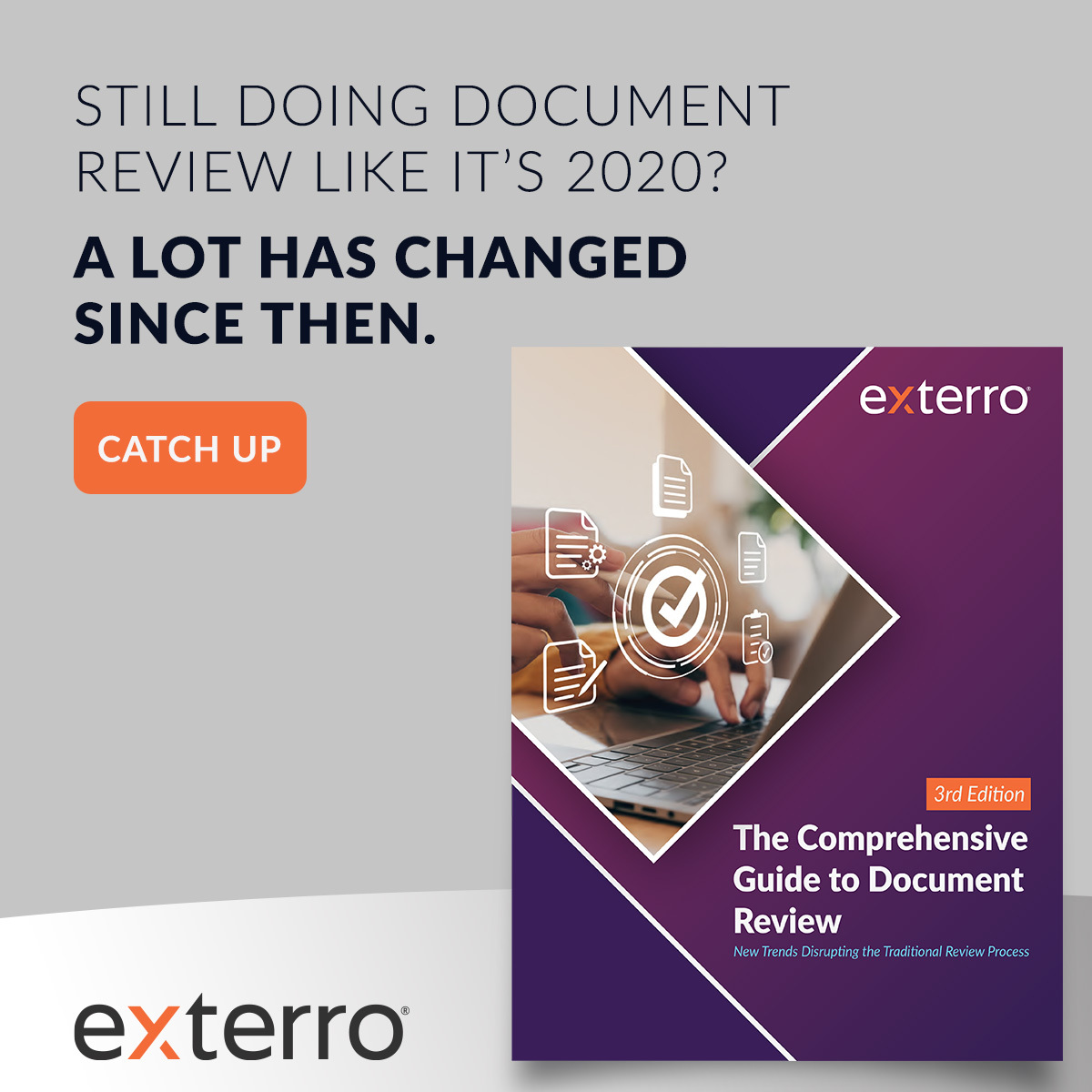E-Discovery
Why Document Review Technology Is More Important Than Ever
March 28, 2024
Document Review in 2024
Today, there are more reasons than ever why it’s imperative to have a document review solution in place. There’s more data than ever before, located in a more diverse set of locations. Large organizations have to reckon with computers, networks, off-network storage, cloud technology platforms, multiplying communications applications, personal devices like smartphones and tablets, and on and on the list goes. All of it may be subject to preservation, collection, and review obligations in the event of civil litigation.
But more than that that—there are more use cases than ever for document review, as well. Beyond electronic discovery for civil litigation, organizations—or their legal representation—might need to review documents for:
- Internal and regulatory investigations like those arising from HR matters, employment changes, potential wrongdoing or misuse of company resources, etc.
- Data breach response to understand what data has been compromised and who needs to be notified
- Data subject access requests (DSARs) to comply with privacy regulations like CPRA, CCPA, GDRP, and more
- Freedom of Information Act (FOIA) and public records requests (PRRs) for governmental agencies and other publicly regulated entities
Whatever purpose you’re conducting document review for, you need to have defensible processes in place—or face the consequences of failure: losing a lawsuit in response to failing your e-discovery or investigatory obligations, civil litigation for failure to notify victims of a data breach, fines and penalties if you fall afoul of privacy regulatory obligations. But first, before we dig deep into multiple aspects of the document review process, let’s cover the basics.
What Is Document Review?
In e-discovery, document review is the stage of the EDRM in which organizations examine documents connected to a litigation matter to determine if they are relevant, responsive, or privileged. It is often the most labor intensive and expensive part of the e-discovery process.
Taking a step back to encompass other use cases, document review is a business process in which reviewers, often legal professionals, review large quantities of documents to determine their relevance and probative value to a matter of investigation or dispute.
The Document Review Process
Document review typically occurs after a legal team has first identified and preserved potentially relevant electronically stored information (ESI), then collected either all or a subset of the preserved ESI (based on initial filtering or in-place early case assessment). With the corpus of potentially relevant data at hand, the document review team typically follow a process that entails:
- Batching the documents into subsets for members of the review team
- Initial relevance review, either using human reviewers or technology-assisted review (TAR)
- Quality control, to validate whether or not the reviewers are accurately determining relevance and tagging documents
- Privilege review to ensure that no documents covered by attorney-client privilege (or any other relevant sort of privilege) are produced
Other steps may be taken—such as creating seed sets for predictive coding technology or redacting sensitive personal data from documents that will be produced—but the above is a high-level overview of the process most teams take.
Moving Document Review In-House
Document review is increasingly moving in-house at both public and private organizations, with recent surveys finding between 50% and 70% either currently using or planning to invest in document review technology. It’s no wonder why. Document review accounts for approximately 75% of all e-discovery costs and is used more frequently today than ever before, given all the use cases in fields like privacy, regulatory compliance, cybersecurity response, and internal investigations.
In recognition of these trends, Exterro has created this all-new 3rd edition of our Comprehensive Guide to Document Review, a major overhaul from the 2nd edition of the Comprehensive Guide to E-Discovery Review, which was published in 2019. Whether for civil litigation or another type of investigation, document review projects cost significant amounts of money—almost three quarters of all e-discovery costs arise during document review. This guide offers useful advice and concrete steps you can take to streamline document review projects, save time and money, and achieve better outcomes.
